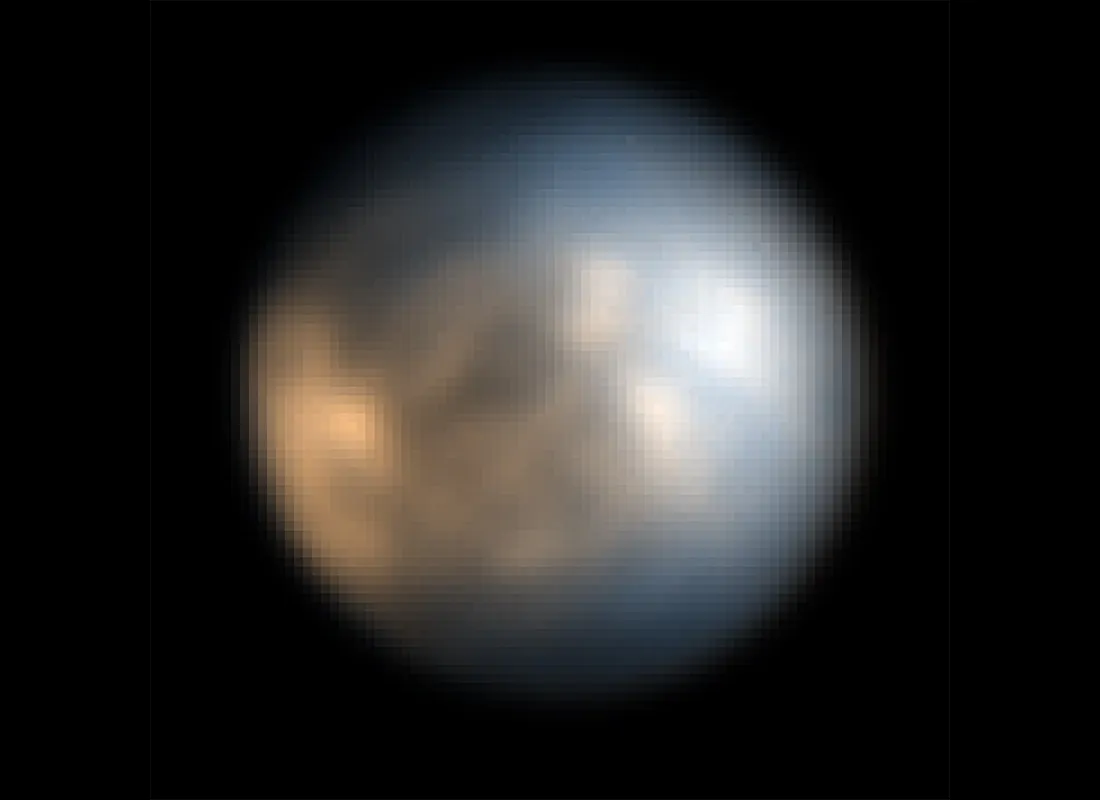Brand new images of Jupiter's largest moons - Europa and Ganymede - are the sharpest ever captured by a ground-based telescope.
The images were captured by a team from the University of Leicester's School of Physics and Astronomy, using the European Southern Observatory's (ESO) Very Large Telescope in the Chilean Atacama Desert.
The news follows recently released images of Europa captured by NASA's Juno spacecraft.
Astronomers used the VLT to observe and map the surfaces of the two icy Galilean moons, and in doing so were able to study the chemicals present in their icy crusts.
Europa in particular is of interest to planetary scientists, as it is thought to have a liquid subsurface ocean and is therefore a prime target in the search for signs of life across the Solar System.
It is the subject of two upcoming missions: the European Space Agency's Jupiter Icy Moons Explorer (JUICE) and NASA's Europa Clipper.
Ganymede, meanwhile, is the largest moon in the Solar System.

These new images of Europa and Ganymede are the clearest ever captured by an Earth-based telescope, and reveal both the chemical composition and geological features of the moons.
In particular, long rift-like features are visible stretching across the surface of Europa.
The team of astronomers were able to record how much sunlight is reflected off the surfaces of the two Galilean moons at various wavelengths of infrared light, which gave them spectra that could then be used to measure which substances are present at the moons.
Europa's spectra show its crust is mostly made of frozen water ice, with some non-ice materials also present on the surface.
Studies of Ganymede show its surface is made up of young areas containing large amounts of water ice, and much older areas mainly consisting of an unknown dark grey material

The areas in blue in the Ganymede images are the moon's polar caps and craters: here, an impact has exposed fresh ice hidden within Ganymede's crust.
The team were able to map how the size of the grains of ice varies across Ganymede's surface.
Study lead Oliver King says: "We mapped the distributions of the different materials on Europa's surface, including sulphuric acid frost which is mainly found on the side of the moon that is most heavily bombarded by the gases surrounding Jupiter.
"[The Very Large Telescope] has allowed us to carry out detailed mapping of Europa and Ganymede, observing features on their surfaces smaller than 150 km across - all at distances over 600 million kilometres from the Earth.
"Mapping at this fine scale was previously only possible by sending spacecraft all the way to Jupiter to observe the moons up-close."

The University of Leicester's Professor Leigh Fletcher is a member of the science teams for the JUICE and Europa Clipper missions.
"These ground-based observations whet the appetite for our future exploration of Jupiter’s moons," he says.
"Planetary missions operate under tough operating constraints and we simply can’t cover all the terrain that we’d like to, so difficult decisions must be taken about which areas of the moons’ surfaces deserve the closest scrutiny.
"Observations at 150-km scale such as those provided by the VLT, and ultimately its enormous successor the ELT (Extremely Large Telescope), help to provide a global context for the spacecraft observations."
